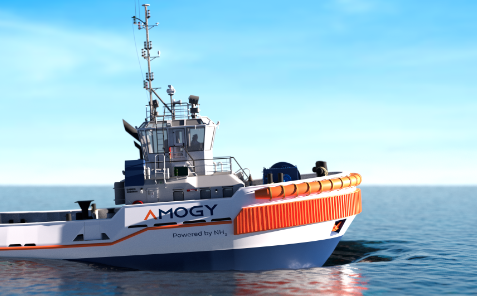It’s a race — there’s no other way to describe it. The race started in 2018 with the International Maritime Organization’s decarbonization goal of reducing greenhouse gas emissions by at least 50% (the emphasis is on “at least”) by 2050, compared with 2008 levels.
Then the departments of Energy, Transportation, Housing and Urban Development, and the Environmental Protection Agency upped the decarbonization goal by committing to a net-zero carbon emissions standard by 2050. That’s 27 years from now. Is it enough time for the operators of an estimated 38,000 commercial vessels in the U.S. to hit that zero greenhouse-gas mark? We’ll see.
Switching to alternative fuels in the marine market is critical in trying to hit that decarbonization goal. Fuel to power new vessels and the thousands of existing tugs, passenger boats, ferries, crew transfer vessels, service vessels, fireboats, police boats, etc., that will need to have diesel-fuel powered engines hoisted off their engine blocks and replaced with an alternative power system.
Currently there are several alternative carbon-free fuel options, including liquid natural gas, hydrogen, ammonia, biofuels, methanol and, yes, electricity. Recent issues of WorkBoat included several vessels that have already started the power change-over process. One of those is the first ammonia-powered vessel built in the U.S. It’s a 105'×27'×15' tug being renovated at Feeney Shipyard in Kingston, N.Y. The tug was built in 1957 at Brooklyn’s Jakobson Shipyard. It’s current owner is Brooklyn-based Amogy, a three-year-old company founded by four MIT alumni. Amogy is also the developer of the 1-MW ammonia-based system that will power the tug. It’s a version of Amogy’s 600-kW power pack. The ammonia-to- power technology feeds liquid ammonia through Amogy’s cracking modules integrated into a hybrid fuel-cell system that powers electric motors for zero carbon emissions.
In another first, though this time across the Atlantic in Norway, Amogy’s website notes that the company will provide the first ammonia-to-power technology for two 269' platform supply vessels, built by Green Ships Invest AS for Bourbon Horizon AS with “an agreed option for a third vessel.”
Amogy’s “ammonia-to-power solution will be integrated into the ePSV power-plant systems, enabling zero-emissions operations.” The driving force is pending emission requirements: “today’s global PSV fleet, is in majority between 10 and 20 years old. It does not comply with the emerging industry emission requirements.”
On its website (amogy.co) Amogy notes that for ammonia to effectively contribute to net-zero goals, there must be an increase in clean ammonia production.
Additionally, carbon taxes would be a way to encourage vessel operators to adopt ammonia — or other alternative fuels — to reduce the maritime sector’s carbon footprint. Along those lines, Amogy notes that the European Council adopted a new regulation to help decarbonize the maritime sector.
The FuelEU maritime initiative is designed to increase the demand for and encourage consistent use of renewable, low-carbon fuels and reduce greenhouse gas emissions from the shipping sector, by penalizing vessels that don’t adhere to certain standards.
Electricity also falls into the alternative fuel category in the search for zero- emission vessels The first fully electric, truckable push tug is being designed by Elliott Bay Design Group, Seattle, and will be built at Miller Marine, Deltaville, Va. EBDG said the 26' tug “will be a test case to understand the market demand for an all-electric vessel.” It should be completed in early 2024.
The 26-footer will be powered by a pair of permanent magnet motors with a 300-kW total output (400 hp). On a full charge the tug will be able to operate for 12-plus hours. Shore power should recharge the tug in about eight hours. The tug is designed to tend dredges and buoys, service construction sites and run short-range ferry operations.




